(Adapted and abridged from 'Habitats of a Hobbit', first published in The Great Outdoors, September 2017.)
Against my usual custom, I’m giving distances here solely in miles; it seems appropriate to the subject.
Terry Pratchett once said that most fantasy books were written by “people who were inspired by people who were inspired by people who were inspired by Tolkien”. I feel as though this might include me, even though I’ve written very little overt fantasy (and published none of it). I did, however, aim for a fantasy-adjacent atmosphere in the opening passages of Three Kinds of North, and it remains unclear for a long time whether the Dawnsingers really have magical powers. I dare say various journeys in the books, including the mountain crossing at the start of The Sundering Wall, take some of their inspiration from Tolkien too. There is, after all, a lot of walking in The Hobbit and The Lord of the Rings.
Locating Middle-earth
Thanks to New Zealand director Peter Jackson’s block-busting film trilogies of The Hobbit and The Lord of the Rings, many people’s mental picture of Middle-earth now looks like Aotearoa, and I’ve even met generally well-informed people who imagined Tolkien himself was a Kiwi. In fact he never set foot there (so no juicy photos of Mt Ngauruhoe or The Remarkables).
John Ronald Reuel Tolkien (1892–1973) was born in South Africa, but brought to England aged three. His childhood was spent in the West Midlands, and almost all his working life in Oxford. In the Prologue to The Lord of the Rings, he places Middle-earth in ‘the North-West of the Old World, east of the Sea’, i.e. Europe. Most of the inspiration for its landscapes is thoroughly English, and Tolkien himself rarely travelled abroad, his two main trips being to Switzerland in 1911 (see below) and a few years later to the Western Front.
Walking in Tolkien’s life
All fantasy needs a healthy dose of realism to make it convincing, and the walking in Tolkien’s books draws on personal experience, right down to knowing what it feels like to be plagued by midges. He might not have branded himself ‘a walker’, but his generation grew up largely without cars; walking (and cycling) were just what you did, and he continued to do so for most of his life.
Tolkien’s first English home was Sarehole in Warwickshire, then a rural hamlet, but long since engulfed by the West Midlands conurbation. Sarehole Mill, which Tolkien knew well, remains, and a nearby patch of woodland, Moseley Bog, is now a Local Nature Reserve. Tolkien treasured the idyll of Sarehole and it became the main inspiration for The Shire.
In 1911, after leaving school, Tolkien embarked on a ‘great adventure’ to Switzerland with relatives and friends; his one really major journey on foot. Leaving Interlaken ‘carrying great packs’, they visited the Lauterbrunnen valley, strongly recalled by his drawings of Rivendell, crossed Kleine Scheidegg to Grindelwald, then went via Grosse Scheidegg to Meiringen (which has another literary association, with Sherlock Holmes). Later they were taken by guides to the Aletsch glacier, and Tolkien recalled a perilous passage along a narrow, exposed path menaced by stonefall. This resonates with the attempts to cross the Misty Mountains in both books, especially The Lord of the Rings, where they are beaten back by stonefall and blizzard.
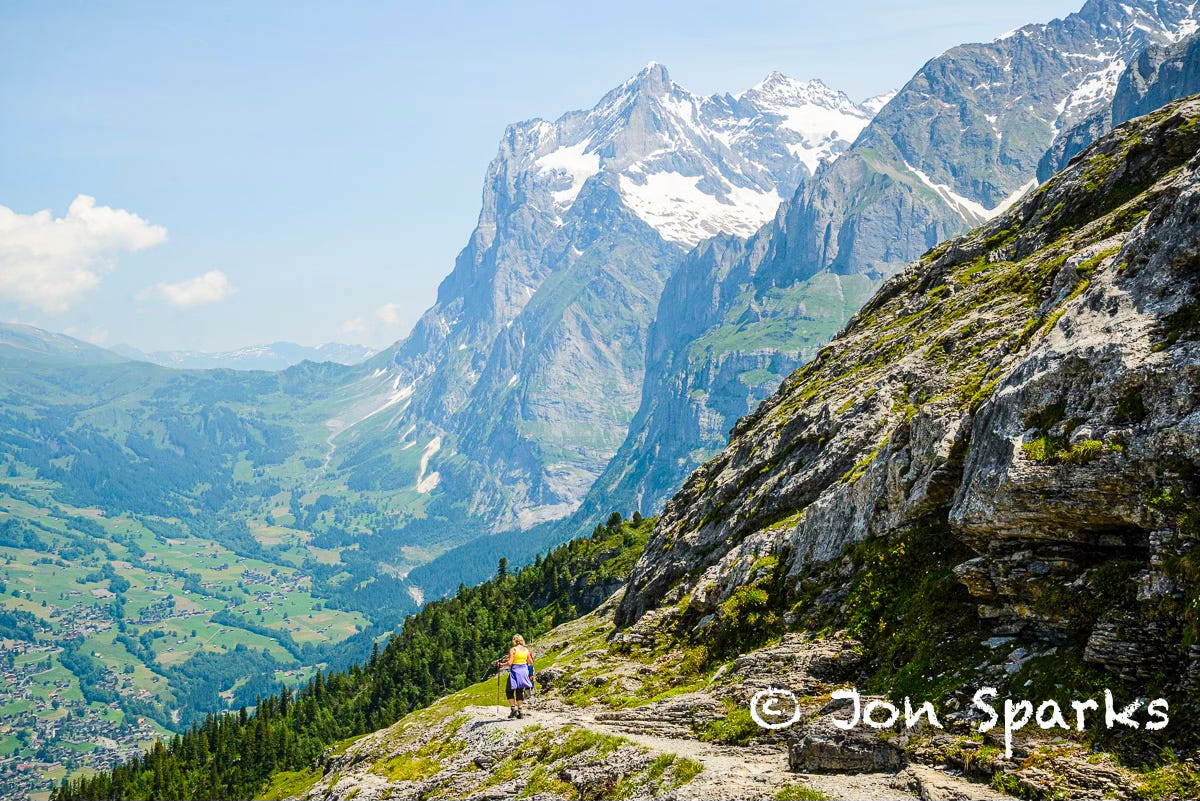
A humbler range, the Malvern Hills, also inspired him, and he explicitly linked them with the White Mountains between Rohan and Gondor. The caves of Helm’s Deep appear to be modelled on those of Cheddar. The Oxfordshire/Berkshire Downs, with their barrows, hill-forts and ancient tracks—notably The Ridgeway—are easily accessible from Oxford and appear to find expression in the Barrow-downs, and perhaps elsewhere in The Lord of the Rings.
Walking in the books
The Hobbit, or There and Back Again
The Hobbit relates the journey of Bilbo (and the Dwarves, sometimes accompanied by Gandalf) from the Shire to the Lonely Mountain. Like The Lord of the Rings, the first stage is from The Shire to Rivendell, but most of it is only briefly described. The pace seems relatively leisurely, taking about 40 days to reach Rivendell (27 days in The Lord of the Rings). They hitch a ride with eagles at one point, later ride down a river in barrels, and complete the journey to the Lonely Mountain by boat and on horseback. The distance actually walked—mostly through Mirkwood—would seem to be about 150 miles out of a total of around 950. Despite the subtitle There and Back Again, there is scant detail about the return journey, but again it seems to have been ridden rather than walked.
The Lord of the Rings
The Lord of the Rings is not one book but a trilogy, much longer than The Hobbit and with multiple narrative strands. Different combinations of the main characters undertake various journeys at different times. We can pick out four main journeys, and Tolkien nerds have calculated times and distances with great precision; distances cited are from Karen Wynn Fonstad’s The Atlas of Tolkien’s Middle-earth.
The champion walkers of the trilogy are Frodo and Sam, and above all Sam, who walks while the injured Frodo rides at the end of the First Journey, and actually carries Frodo at the end of the Fourth. The total distance covered on foot is 1390 miles in 74 days, giving an overall daily average of 18.8 miles.
The three walking stages of their journey are all similar distances (458, 462, 470), separated by rest periods at Rivendell and Lorien. Sam’s total of 1390 miles beats Land’s End to John o’Groats, which—even avoiding roads as far as possible—usually doesn’t exceed 1200 miles. A daily average of 19 miles for this would be impressive.
Furthermore, Frodo and Sam rarely get to sleep in comfortable inns or even a nice bothy, but have to bivouac as best they could (and fend off Gollum!). Nor can they regularly stock up on provisions. They often have to forage along the way, though they have some supplies of a remarkable waybread called lembas; this keeps fresh for months and it’s said at one point that ‘one small bite is enough to fill the stomach of a grown man’. Makes Clif Bars look a bit ordinary.
But Frodo and Sam are hobbits, or halflings, under four feet tall. The hobbits’ ability to keep up with tall men like Aragorn (aka Strider), and cover such distances, does seem remarkable. One might even say, fantastical.
Walking in Tolkien’s footsteps
First inspiration it may have been, and a visit to Sarehole is fascinating, but it’s not prime walking territory today. A wander round Mosley Bog takes half an hour or less. Following the River Cole through the ribbon-like Shire Country Park (named in 2005) covers about four miles, and often feels surprisingly rural.
The Malvern Hills, on the other hand, certainly do offer grand walking, even if the entire range is only about eight miles from end to end. They might have inspired Tolkien’s vision of the White Mountains, but clearly 'the tale grew in the telling'; the White Mountains appear to stretch around 300 miles. An end-to-end ridge-walk appears the obvious (and highly enticing) prospect, but public transport isn’t exactly helpful; a bus or train from Great Malvern to Ledbury followed by taxi to Hollybush seems to be the most convenient option.
The Ridgeway equally lends itself to end-to-end walking. The 87-mile stretch which now forms The Ridgeway National Trail is only part of a much longer route from Dorset to Norfolk. The Oxfordshire/Berkshire Downs are the centrepiece of the section west of the Thames, offering elevated, open and sometimes surprisingly remote-feeling walking. Most of this is bridleway or byway, so can also be followed on horseback or by bike.
Another area where Tolkien undoubtedly walked is Lancashire’s Ribble Valley. One of his sons taught at Stonyhurst College (a Catholic public school) near the village of Hurst Green; Tolkien made several visits and wrote long passages of The Lord of the Rings there. However, even as a proud Lancastrian, I find local claims that the area was the inspiration for Middle-earth vastly overblown. He first visited after The Hobbit was published, with his invented world and its mythology already taking shape. However, there are indications that the Ribble Valley played its part as he worked out more of the detail.
What the Ribble Valley does offer is the chance for a proper walk in Tolkien’s footsteps, in a landscape that has changed far less than that round Sarehole. There’s an official ‘Tolkien Trail’—inevitably—but I think it’s well worth extending this to climb onto Longridge Fell. The view northward from here over the valley of the River Loud is as Shire-like as anyone could ask. Anyone who’d like detailed route notes, feel free to contact me.







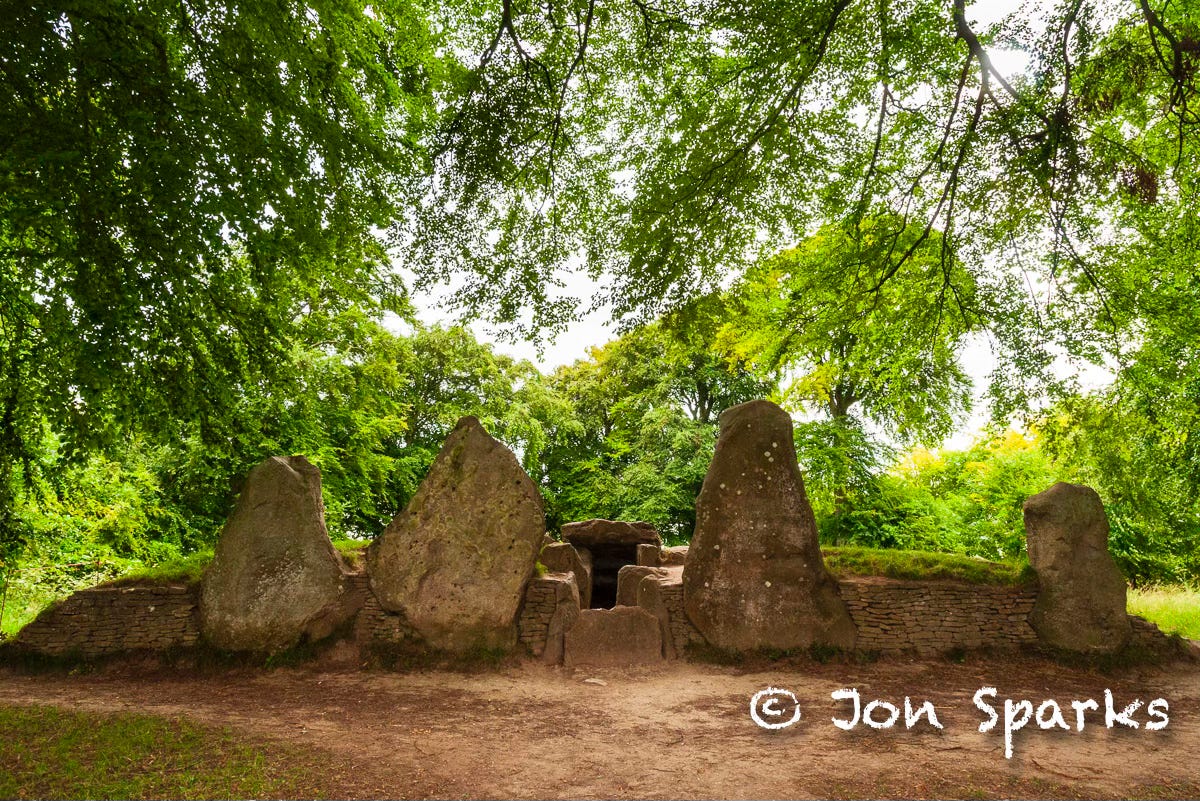
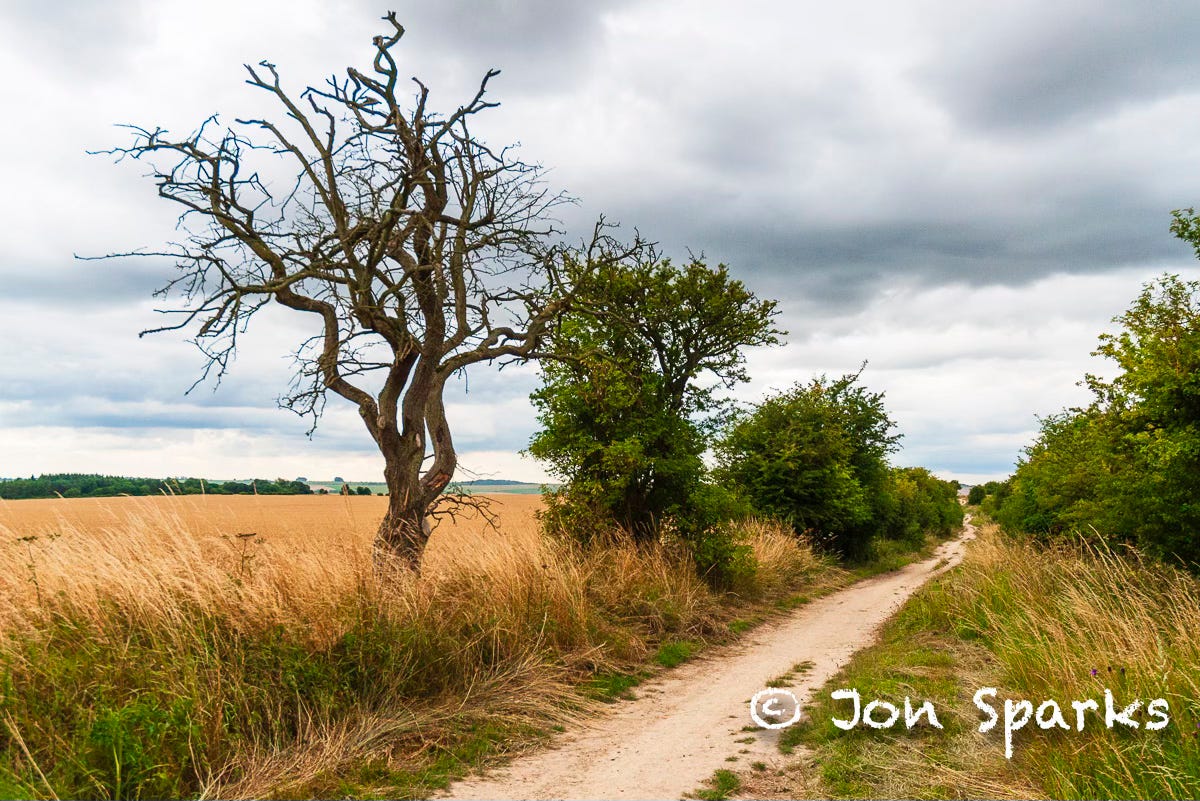
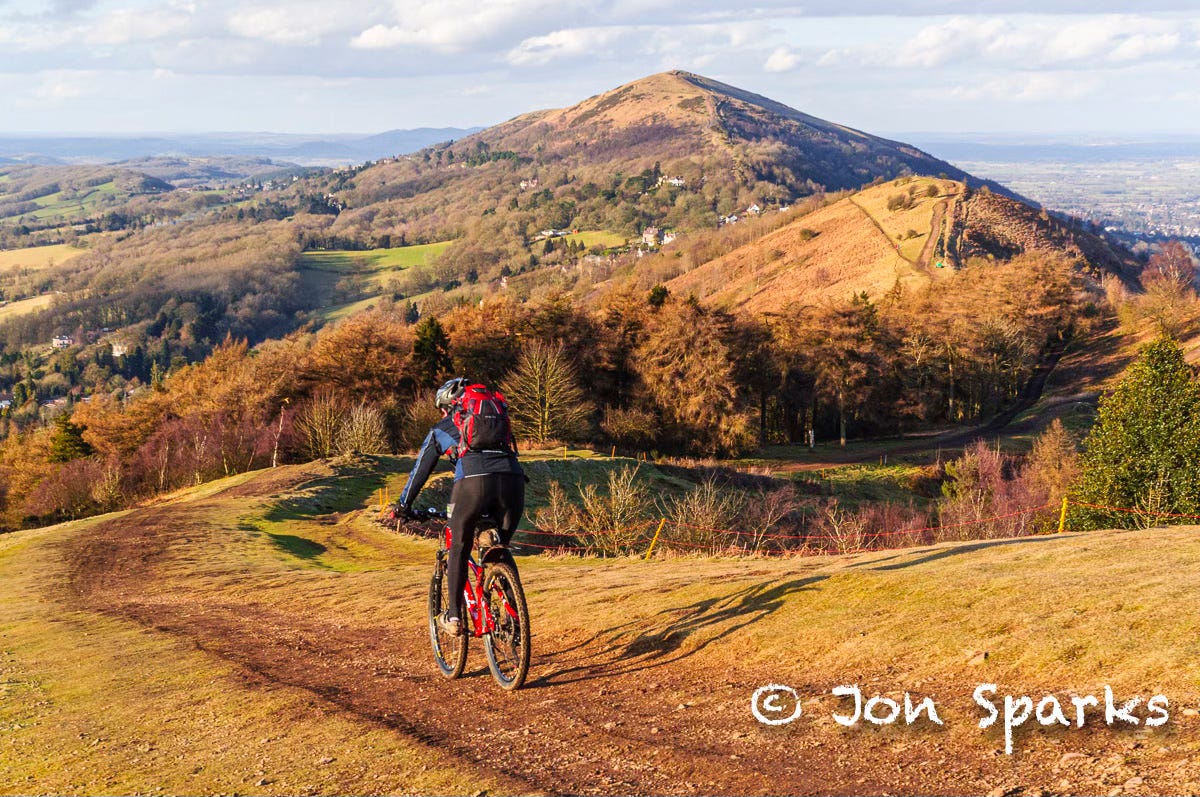
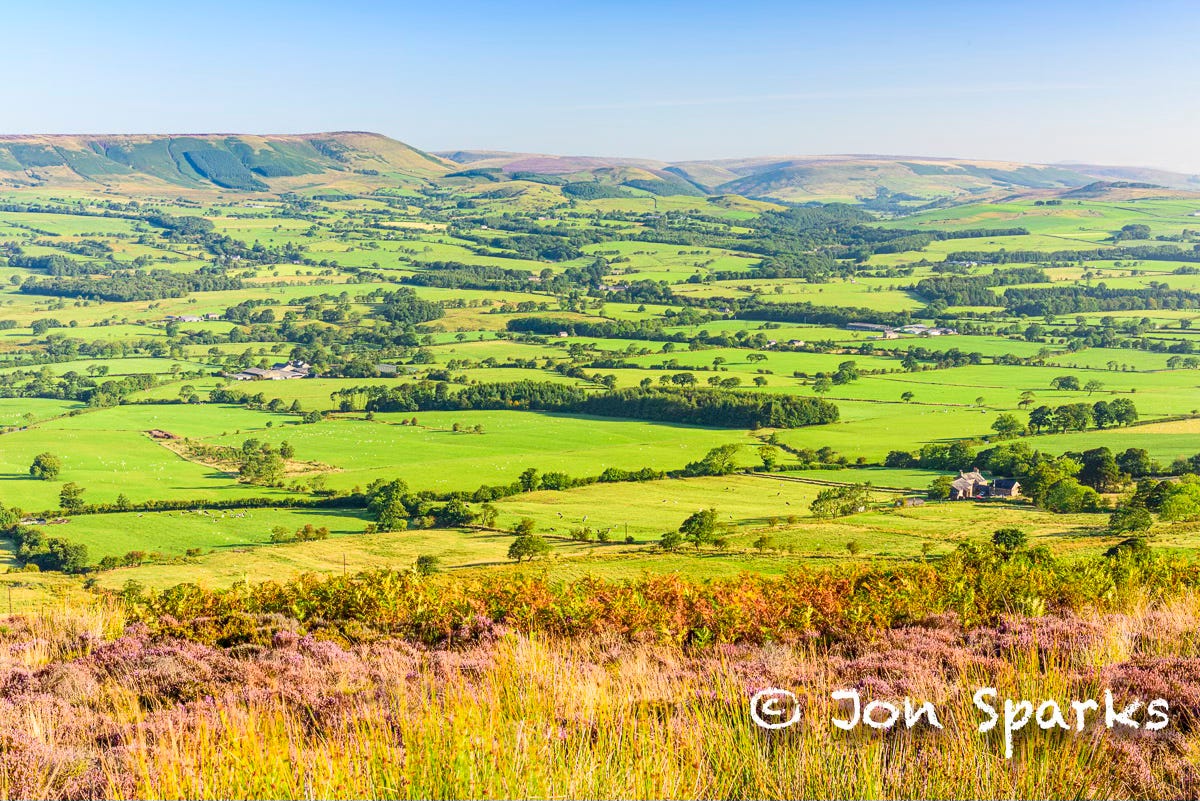
John, I enjoyed this combo: your text, your real photos and the gorgeous tolkienish-landscape!!!. Great. Love Tolkien.
The Malvern Hills are indeed a wonderful place to walk. Of course, one option for the end to end is to start in Great Malvern and go ‘there and back again’. It’s a challenging walk! If any of your readers fancy something shorter, they might like 15 Short Walks on the Malvern Hills, published by Cicerone. (And written by me!)